Newborn foal exams
By Daniel H. Grove, DVM
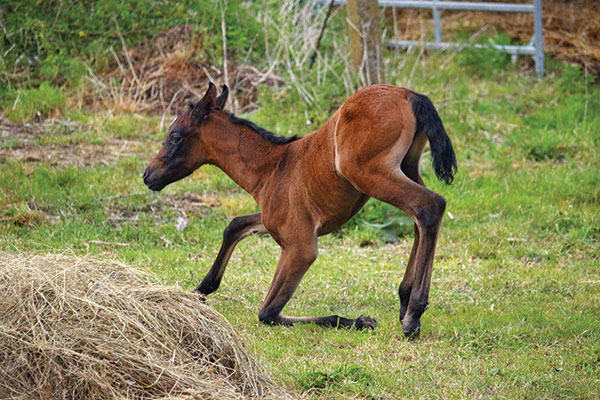
It is January and the foals are coming. I thought a review of what I look for in a newborn foal exam was worth revisiting. Twelve to twenty four hours after birth, it is an excellent idea to have your newborn evaluated by your veterinarian. This month, I would like to discuss what I do on my new foal exams and why. I do them in the same order everytime so that I do not miss anything. I start at the tail and work my way forward.
Going viral: be vigilant
By Daniel H. Grove, DVM
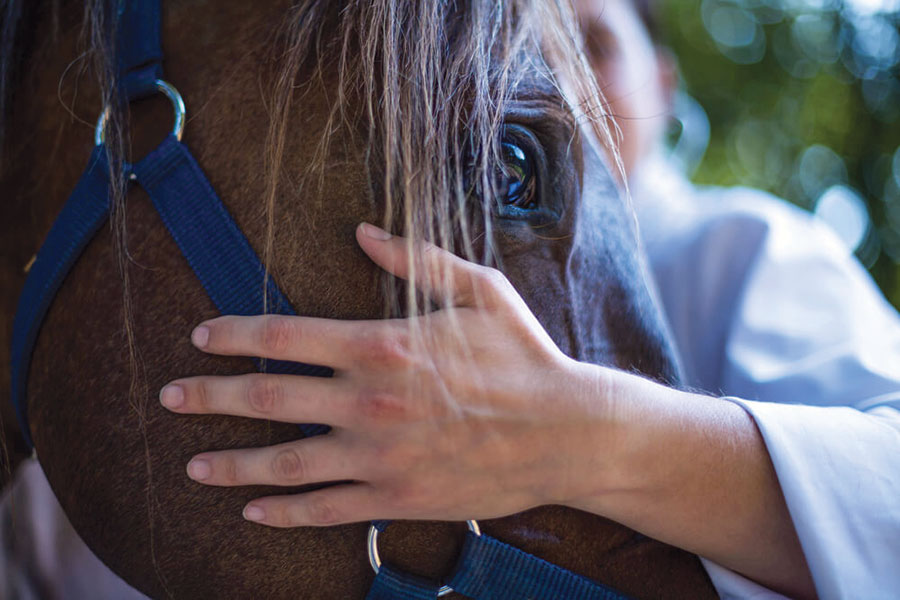
In the United States, we have two viruses that are currently a hot topic for those of us traveling with our horses. The first is Equine Herpes Virus. I have discussed this previously in this forum. It is a group of viruses from the herpes family. There are nine different known varieties, but three of them are the most important, 1, 3, and 4. They can cause respiratory disease, neurological disease, venereal disease and abortion, depending upon which one you are dealing with. There are vaccines available to protect our horses. Vaccination along with bio-security are your best tools to prevent this being an issue for your horse.
Heat
By Daniel H. Grove, DVM

Every year around this time, I like to remind everyone how important it is to keep an eye on some things to help your horse navigate its way through this time of year.
As with all year round, water is very important. With the added stress of hot weather, it is very important to supply endless cool, fresh and clean water. Things that can decrease water intake are hot water, dirty water, different water or contaminated water. Please, check the water often to make sure it is pristine. If traveling, a trick my assistant likes to use is to give her horse a second water bucket with a sports drink mix in it for about a week prior to going to the event. Then, at your destination, you can add the sports drink mix to the new water to hide the different taste!
Compounded vs. commercially prepared medications
By Daniel H. Grove, DVM

With our animals, we usually have to cover the costs of healthcare instead of having insurance or the government paying for it. This leads us to look for ways to save money anywhere we can often times. One of the ways is by looking for less expensive medications for our animals. Often times, compounded medications can be less, but there is a reason for it.
Brand name and generic medications are commercially prepared. These drugs must past FDA approval. This is a long and detailed process with studies done as to the efficacy, consistency, and safety of a drug. The FDA monitors these drugs even after they are approved for use. They monitor side effects, and production continuously to ensure the safety of the patients receiving them. With this oversight and regulation, the companies manufacturing these products have to maintain their production facilities with strict adherence to the regulations. It is not uncommon for production of a medication to be stopped for a period of time for updating a manufacturing process or plant to comply with FDA changes that occur. While no one probably lacks appreciation for this safety in the pipeline of medication manufacturing, many of us do not like the idea that it does cost money. Since we are the consumers of the product, we have to pay for this service. Also, if something goes wrong with the use of the medication, most of these companies will stand behind their products and want to make it right with their customers. They will help with testing and treatment of side effects.
Do I really need to vaccinate?
By Daniel H. Grove, DVM
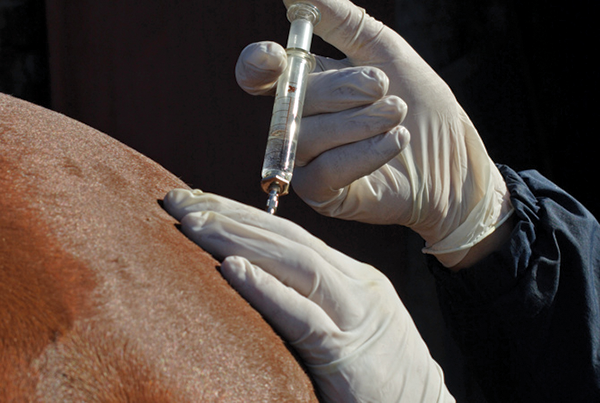
The vaccine debate is not limited to whether or not to vaccinate your children. The debate continues over into our pets also. With horses, some people have the unfortunate experience of vaccine reactions that give the pause for future vaccines. So, with such concern over the vaccination of animals, we will review what is considered the minimum vaccines for all horses and what the optional ones are. First, let’s answer the question, “Do I really need to vaccinate my horse?”
Tips when changing horse homes
By Daniel H. Grove, DVM

Moving to a new barn is not only stressful to your horse, but also for you. Bonds will be broken and new bonds made. Feed may change. Water may be different. Different diseases may be present. All of these things should be on your mind, and I will try to give you some pointers to help minimize the stress!
Moving to a new herd
Horses are herd animals. They are encoded to pack together for their own safety. They tend to make bonds with the horses around them and consider them part of the group, even if they are not all in a pasture together. When you disturb this bond, some horses get very upset. If you are moving and you have multiple horses, this may not be as big of an issue since they may be happy with just one or two others. If not, expect a few days of excessive vocalization and worry. You can discuss with your veterinarian the use of a product called Zylkene® that is made from colostrum. It is natural and makes the horse feel at home.
Cold weather care
By Daniel H. Grove, DVM
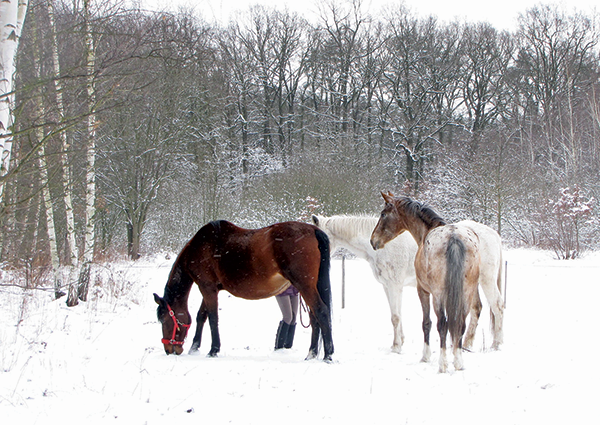
Cold, wet weather presents a few challenges that can usually be mitigated with a few extra precautionary tips. Horses are designed to be able to survive in a variety of climates, but through our manipulation and care, sometimes we impede their ability to thermoregulate in the winter time. Let’s discuss some key points on winter care.
Vet’s perspective: arena footing’s importance

By Daniel H. Grove, DVM
Arena footing comes in a wide variety of substrates. There are natural and man made materials used in their composition. In this article we will learn a few basics and then discuss some factors to look at from the veterinary side of injuries and their prevention.
When selecting a footing for your arena, there are some factors to take into consideration.
1) Shock absorption: Shock absorption or cushion is going to take strain off of the legs of your horses. While they do have built in structures to help with this, anything you can do to aid can be beneficial. If you run on concrete you are more likely to be sore than if you run on grass!
5-panel Testing
 As breeding season is right around the corner for those of us in the northern hemisphere, I think it is good to take into consideration genetic testing. The 5 panel test is a group of five diseases commonly found in quarter horses and related breeds. Knowing if your mare or stallion carries the genetic defects that can cause these diseases can help steer you to a breeding match that will prevent experiencing these debilitating diseases in the offspring.
As breeding season is right around the corner for those of us in the northern hemisphere, I think it is good to take into consideration genetic testing. The 5 panel test is a group of five diseases commonly found in quarter horses and related breeds. Knowing if your mare or stallion carries the genetic defects that can cause these diseases can help steer you to a breeding match that will prevent experiencing these debilitating diseases in the offspring.
HYPP
HYPP (Hyperkalemic Periodic Paralysis) is a disease that results in uncontrolled muscle spasms and/or paralysis. They can be as severe as to cause death. The defect results in too much potassium being leaked into the blood stream. It can be managed by a low potassium diet and also the use of potassium wasting diuretics. If a horse has 2 copies of the gene, they are most likely to manifest signs. If one copy of the gene, less likely.
Strangles and Biosecurity
 We had a question come in regarding strangles. This year, the American College of Veterinary Internal Medicine (ACVIM) came out with a consensus statement on this disease. I will go over the key items discussed and the bio-security measures they recommend. These recommendations apply to any outbreak of contagious disease, although each disease may have some minor changes.
We had a question come in regarding strangles. This year, the American College of Veterinary Internal Medicine (ACVIM) came out with a consensus statement on this disease. I will go over the key items discussed and the bio-security measures they recommend. These recommendations apply to any outbreak of contagious disease, although each disease may have some minor changes.
Strangles is a term used to describe a bacterial infection caused by the organism Streptococcus equi ssp equi. The common presentation is a respiratory disease with lymph node enlargement. Horses typically have a fever and severe nasal discharge. The bacteria starts to be shed in nasal secretions 2-3 days after the onset of fever and typically persists for 2-3 weeks. It is recommended that all recovered horses be treated as potentially infectious for six weeks after the resolution of purulent (pus) discharge. From 20-25 percent of horses recovering from the disease can become susceptible to a second attack of the disease. An average of 10 percent of horses will have a persistent infection in their guttural pouches, which are located in the throat area and can test positive from that area for months to years without showing outward clinical signs. These types of animals, healthy without showing signs, are thought to be more important in the spread of the disease as they are not recognized as sick.


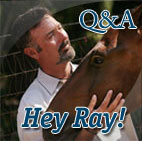
 Read Columns
Read Columns

